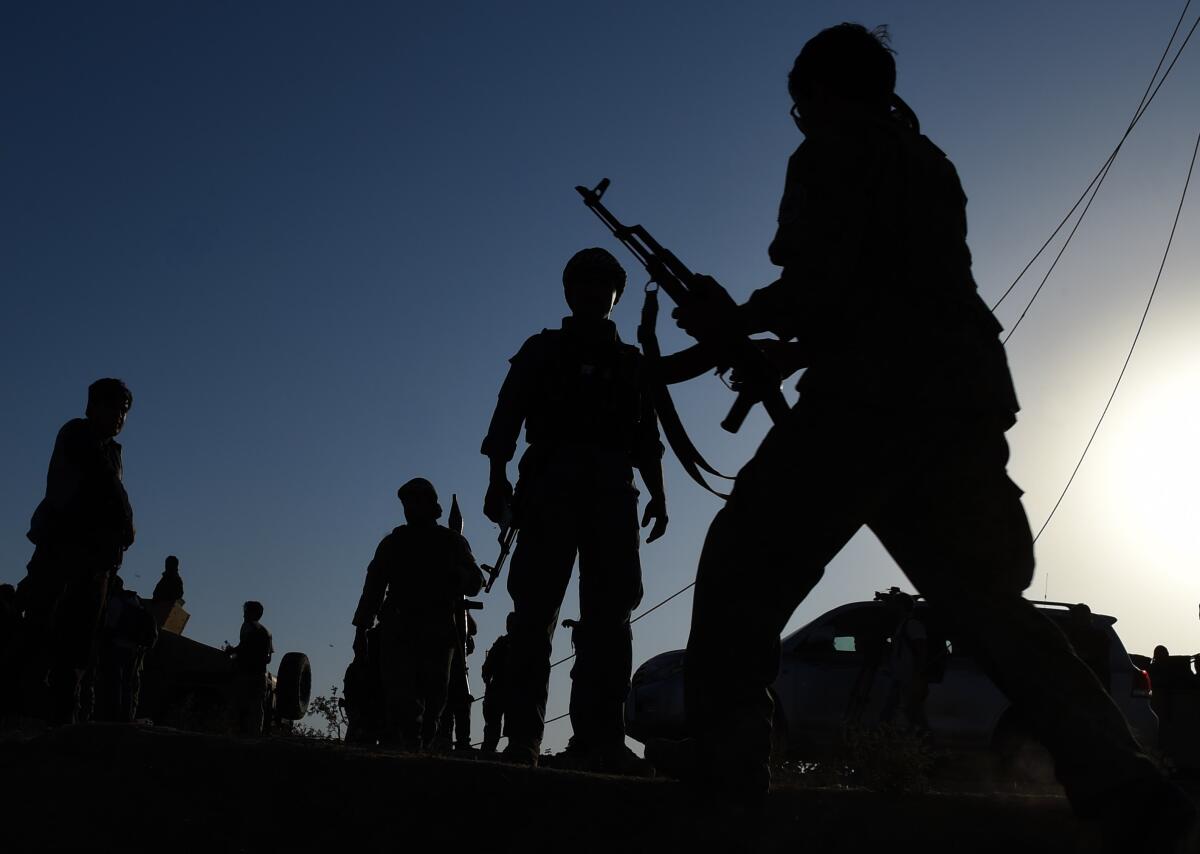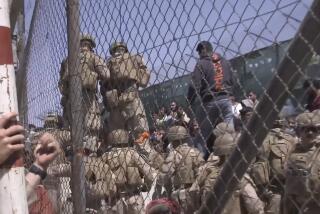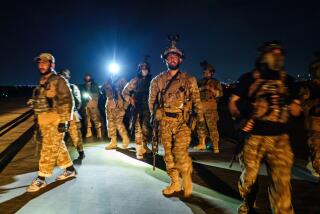U.S. soldier killed in Afghanistan; Taliban claim attack

- Share via
KABUL, Afghanistan — An American service member was killed in combat Monday in Afghanistan, the U.S. military said, without providing further details, while the Taliban claimed they were behind a roadside bombing in northern Kunduz province that killed the U.S. soldier.
The latest fatality brings the number of U.S. deaths in Afghanistan this year to 20. There have also been three noncombat deaths in 2019. More than 2,400 Americans have died in the nearly 18-year conflict.
The Taliban now control or hold sway over practically half of Afghanistan but continue to stage near-daily attacks targeting Afghan and U.S. forces, as well as government officials — even as they hold peace talks with a U.S. envoy tasked with negotiating an end to what has become America’s longest war. Scores of Afghan civilians are also killed in the crossfire or by roadside bombs planted by militants.
Monday’s U.S. military statement did not identify the U.S. soldier or say where in Afghanistan the service member was killed. It said that in accordance with U.S. Department of Defense policy, names of service members killed in action are withheld for 24 hours or until the notification of the family is completed.
Last month, two U.S. service members were killed in Afghanistan when their helicopter crashed in eastern Logar province. The Taliban also claimed responsibility for that crash, saying they had downed the helicopter, causing many fatalities. The U.S. military dismissed the Taliban claim as false.
Shortly after the U.S. military statement on Monday, Taliban spokesman Zabihullah Mujahid tweeted that the U.S. soldier was killed in the Chardara district in northern Kunduz province where U.S. and Afghan forces were carrying out a joint raid. Mujahid said the insurgents had planted a roadside bomb that killed the service member.
The U.S. military did not immediately respond to the Taliban claim.
The Taliban have a strong presence in Kunduz province and are completely in control of several of the province’s districts. The provincial capital, the city of Kunduz, briefly fell to the Taliban in 2015, before the insurgents withdrew in the face of a NATO-backed Afghan offensive. The city is a strategic crossroads with easy access to much of northern Afghanistan as well as the country’s capital, Kabul, about 200 miles away.
The following year, 2016, the Taliban pushed back into the city center, briefly raising their flag before gradually being driven out again. In August they launched another attempt to overrun the city but were repelled.
Washington’s peace envoy Zalmay Khalilzad has been trying to hammer out a peace agreement with the Taliban for over a year. The U.S. wants the deal to include a promise from the Taliban that Afghanistan would not used as a base by any terrorist group.
Earlier this month, Khalilzad met with Taliban representatives in Qatar, where the insurgents maintain a political office, as the talks between the two sides resumed after a three-month halt by President Trump following a particularly deadly wave of Taliban attacks, including a Kabul suicide bombing that killed an American soldier.
The Qatar meeting focused on getting a Taliban promise to reduce violence, with a permanent cease-fire being the eventual goal.
Khalilzad is trying to lay the groundwork for negotiations between Afghans on both sides of the protracted conflict but the Taliban refuse to talk directly with the Kabul government.
More to Read
Sign up for Essential California
The most important California stories and recommendations in your inbox every morning.
You may occasionally receive promotional content from the Los Angeles Times.













